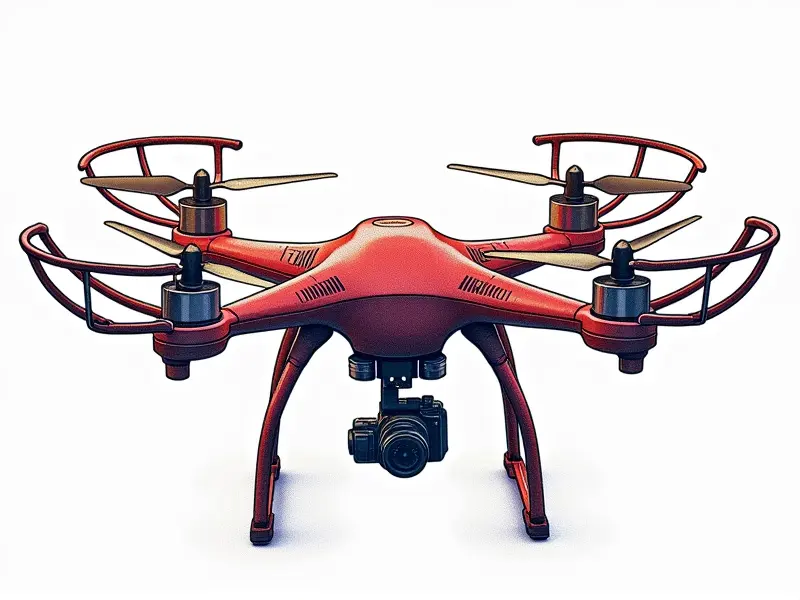Can drones fix themselves?

Future of Drones: Autonomous Repair Capabilities
The future of drone technology is poised to revolutionize how we perceive and utilize unmanned aerial vehicles (UAVs). One of the most exciting advancements on the horizon is the potential for drones to autonomously detect, diagnose, and repair their own issues. This self-repairing capability could dramatically enhance operational efficiency, reduce maintenance costs, and ensure continuous service in critical applications such as search and rescue operations or agriculture monitoring.
Self-Repairing Drones: Reality or Myth?
The concept of drones capable of fixing themselves might sound like science fiction today. However, with rapid advancements in artificial intelligence (AI), robotics, and material sciences, the idea is moving closer to reality. While fully autonomous repair systems are not yet commonplace, initial prototypes and experimental designs demonstrate promising steps towards this goal.
Innovations in Drone Technology: Self-Repair
Several innovations are driving progress toward self-repairing drones:
- Sensors and AI Integration: Advanced sensors combined with sophisticated machine learning algorithms enable drones to monitor their own health status continuously.
- Modular Design: Drones designed with replaceable parts allow for easier maintenance and potential self-repair capabilities.
- Autonomous Navigation Systems: Enhanced navigation systems help drones return safely to a repair station or execute simple repairs in the field.
Exploring Automated Maintenance in Drones
Automated maintenance is a critical aspect of enabling self-repairing drones. This involves integrating various technologies such as:
- Prognostics and Health Management (PHM): Systems that predict potential failures based on real-time data, allowing for preemptive action.
- Remote Diagnostics: Connecting drones to ground stations or cloud services for remote analysis of issues.
- Automated Tooling: Designing tools and robotic arms that can perform repairs independently or with minimal human intervention.
The Quest for Autonomous Drone Repair
The quest for autonomous drone repair involves overcoming several technical challenges:
- Data Collection and Analysis: Gathering sufficient data to train AI models accurately is essential but challenging.
- Mechanical Complexity: Designing drones that can perform complex mechanical tasks without human assistance requires innovative engineering solutions.
- Economic Feasibility: Balancing cost-effectiveness with the benefits of autonomous repair remains a key consideration for widespread adoption.
Could Your Next Drone Fix Itself?
The day when your next drone can fix itself may not be as far off as it seems. Manufacturers are increasingly incorporating features that lay the groundwork for future self-repair capabilities:
- Sensor Integration: Drones equipped with more sophisticated sensors capable of monitoring internal and external conditions.
- Smart Materials: The use of materials that can adapt or repair themselves under certain conditions, like conductive polymers for circuitry repairs.
Are Self-Healing Drones Possible Today?
While fully self-healing drones are not yet a reality, there are several technologies and concepts in development:
- Self-Repairing Coatings: Protective coatings that can seal minor cracks or damage.
- Mechanical Self-Adjustment: Mechanisms within drones that can automatically adjust settings or replace faulty components.
Drone Tech: Moving Toward Autonomic Repair
The push towards autonomic repair in drone technology is driven by multiple factors, including:
- Increased Reliability: Ensuring drones can operate reliably for extended periods without human intervention.
- Reduced Maintenance Costs: Lowering the overall cost of ownership through minimized downtime and maintenance needs.
- Enhanced Safety: Improving safety by reducing risks associated with manual repairs in hazardous environments.
Can Drones Detect and Fix Problems Independently?
The ability for drones to detect and fix problems independently hinges on advancements in AI, robotics, and sensor technology. Current research focuses on:
- Vision Systems: Using cameras and advanced image processing techniques to identify issues.
- Mechanical Intelligence: Developing robotic appendages that can manipulate parts for repair or replacement.
Exploring the Potential of Self-Repairing Drones
The potential benefits of self-repairing drones are numerous, including:
- Continuous Operation: Ensuring uninterrupted service in critical applications like emergency response and environmental monitoring.
- Enhanced Reliability: Reducing the likelihood of unexpected failures through proactive maintenance.
The Future of UAVs: Automated Troubleshooting
The future of unmanned aerial vehicles (UAVs) will likely include automated troubleshooting as a standard feature. This capability will be driven by continuous improvements in:
- AI and Machine Learning: Advancements that enable drones to learn from their experiences and adapt to new situations.
- Sensor Technology: Enhanced sensors capable of detecting minute changes that could indicate potential issues.
Conclusion
The possibility of self-repairing drones represents a significant leap forward in the field of UAV technology. While fully autonomous repair systems are still in development, ongoing advancements suggest that this capability is within reach. As sensors become more sophisticated and AI continues to evolve, we may soon see drones capable of identifying and addressing their own issues independently. This development promises not only increased reliability but also substantial cost savings and enhanced safety across various industries.

